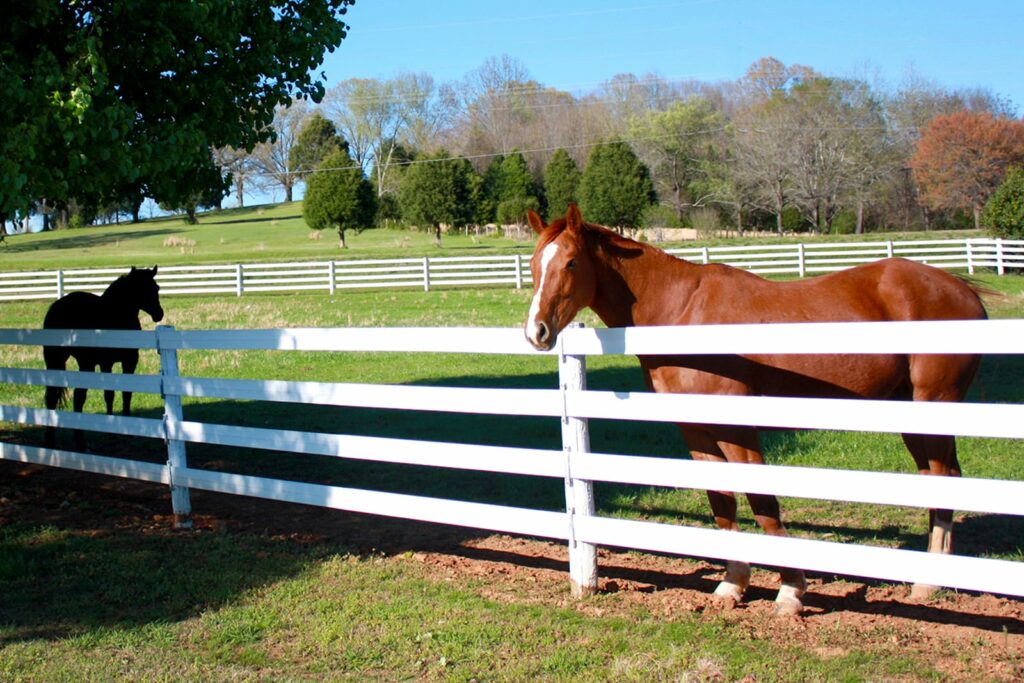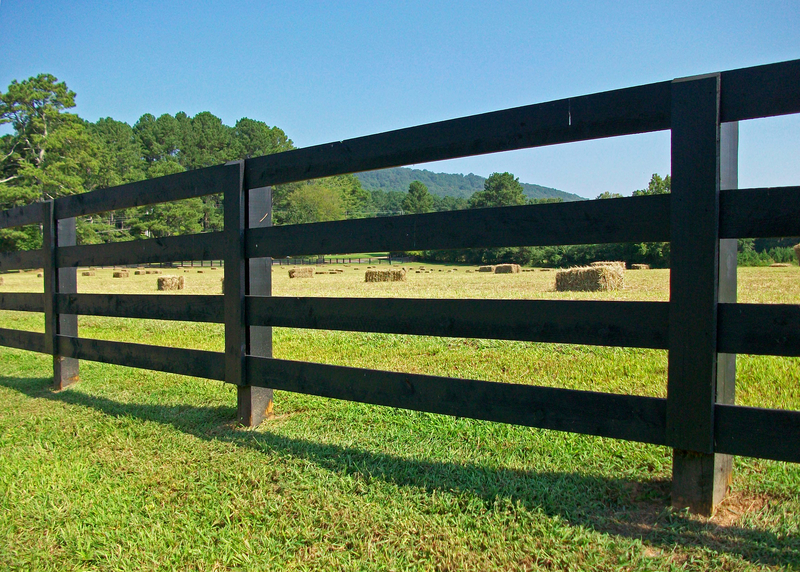Stock & Noble

Are Post and Rail fences eco-friendly?
- BY Tripti Kakkar
Take one look around our world, and you will notice almost every product we consume is loaded with toxins. Most people, things, products and activities are busy releasing harmful chemicals into the environment. The good news is that more and more individuals are now becoming aware of the dire need of saving our planet, and consciously leaning towards eco-friendly options.
In the light of the current state of our toxin consumption, the importance of eco-friendly fencing has increased.
At Stock & Noble, we provide the finest fencing solutions so you can build beautiful equine properties. We acknowledge the part we can play in environmental responsibility and do our best to sell sustainable options so that the world can remain beautiful as well.
If you too want to protect your loved ones, and your animals and contribute to the safety and preservation of the resources provided by our planet then read on.
This article will focus on:
- Important things to consider and ensure that horse fencing is eco-friendly
- The environmental impact of different types of horse fencing
Things to consider and ensure that the Post and Rail fence is eco-friendly
No matter which horse fencing you pick, consider the environmental impact of producing the fence, the maintenance necessary to extend the life of the fence and the chemicals the fence may potentially leach into the soil.
Once that is done, for any Post and Rail fencing to be considered sustainable it needs to pass through the following filters.
1. An eco-friendly Post and Rail fence should be recyclable
This is the first and the foremost factor in whether your choice of fencing is eco-friendly or not. Like any sustainable product today, an environmentally safe Post and Rail should have the ability to be 100% recycled. If it’s made from recycled material, then that’s even better.
2. Sustainable Post and Rail fence should be easy to recycle
For a successful practice of recycling any fencing product, the process should be extremely simple. The material fencing is made from should have enough recycling plants available in the region. If the plants are far and few, it becomes difficult to follow through with the process of recycling and the product eventually ends up being disposed of in not an eco-friendly way.
3. An eco-friendly Post and Rail fence should have low VOC emissions over its lifetime
When Post and Rail fences go through chemical treatment or get painted, especially with oil-based paints, Volatile Organic Compounds or VOCs get released into the environment and leach into the soil. So, while judging a fencing option for sustainability do consider the different stages at which your fence needs to be painted or chemically treated.
4. An environmentally safe Post and Rail fence should not have toxins or chemicals
Some Post and Rail fences either use chemicals in the production or they might even have toxins as a part of the final fencing product. Do check for these harmful substances before you pick your sustainable fencing. The level of impact can be reduced by using sustainable materials (this might mean using recycled materials or materials that can be fully recycled) or by using materials that have minimal pollution or emissions created during manufacturing.
5. Sustainable fencing should be easy to dispose of
If horse fence doesn’t have an option of easy and proper disposal, it ends up adding to the enormous trash our planet is currently drowning in. At the end of its life, the Post and Rail fencing should be viable to be disposed of in a way that it either becomes a part of nature itself or causes the least damage to the environment.
Think if it is possible to give your fencing materials a new life without contributing to wasteful manufacturing processes.
6. For a lower impact on the environment, fencing should use renewable resources
We are already putting our planet under a lot of stress for resources. An ideal Post and Rail fencing option should not add to this pressure and use minimal non-renewable resources like wood and water.
The environmental impact of different Post and Rail fencing options in 2022
Today, the common Post and Rail fencing options in Australia and New Zealand are Timber, PVC, Flexible Plastic and Steel.
Let’s discuss each one of these options in the light of the factors we just listed above.
Timber Post and Rail Fencing
Timber fencing is likely the oldest type of fencing we have in our region. Wood is an environmentally friendly option with no greenhouse emissions, no air and no water pollution. Its biggest strength is that it is natural, recyclable, and of course, there is no issue when it comes to disposing of the Timber Post and Rail fencing.
However, the negative environmental impact of Timber fencing is threefold.
- It causes depletion of our natural resources by chopping off trees, which we must protect and preserve.
- Harmful chemicals that aren’t considered environmentally safe are used in “Treated Timber fencing,” to extend the life of the wood.
- Coating that’s applied to Timber fencing every 3-4 years emits VOCs and also leaches these toxins into the soil.
PVC Fencing
PVC is a type of Vinyl.
The fortified plastic material is 100% recyclable, and it is pretty easy to do so, with ample recycling plants available today.
There seem to be mixed opinions on how toxic fortified plastic is. Some claim that certain varieties of Vinyl fencing are completely made of natural materials, don’t use any harsh chemicals in the production and are therefore environmentally friendly. However, others believe that harmful chemicals are added to increase the durability and strength of Vinyl fencing. And not just that, toxins are released when Vinyl fencing breaks down due to weathering or sun exposure.
Well all views aside, Plastic is plastic. It isn’t natural or biodegradable. Also, typically there are toxic fumes emitted in the production of most Plastic fencing.
Just like production, there are conflicting views when it comes to the recycling abilities of Vinyl. Some say it is difficult to recycle, and the process is harmful to the environment. While other manufacturers or suppliers believe that their Vinyl fencing is 100% natural as well as recyclable.
The best practice to recycle Vinyl is to deliver it back to a Vinyl fencing manufacturer. If this is not viable, then delivering to your local recycling centre could be a workable solution.
The best way forward in choosing PVC Fencing is to speak to your fencing supplier and ask if toxic chemicals are used in its production and if it is recyclable or not.
Steel Post and Rail fencing
Steel is 100% recyclable and can be recycled and reused an unlimited number of times.
In fact, Steel is the most recycled material in the world.
Compared to other materials like Plastic, Steel requires a relatively low amount of energy for initial production which also causes low emission and environmental pollution.
Steel’s greatest environmental benefit is its ability to be recycled or reused at end of life. For other materials, it is necessary to manage their end-of-life carefully to realise the limited benefit they can provide.
The biggest maintenance issue with Steel fencing is rust. However, rusting is a natural process and has no impact on the environment.
Steel is definitely the most environmentally safe fencing option, however when you use Cattle Rail fencing it needs to be painted to elevate its look and protect it against rust. If you’re using oil-based paints, it will lead to the emission of VOCs in the environment. A good option would be to use a Pre-powdered Cattle Rail or Buckley Steel Fencing System.
Is my Post and Rail fencing good for the planet?
The answer lies in judging your fence against the 6 things that make a fencing product environmentally safe. In this article, you learnt these factors and now you can check whether your Post and Rail is recyclable, how easy it is to be recycled, what are the VOC emissions over its lifetime, what toxins or chemicals are present in the product, how to dispose the fence when it’s not usable and whether it’s depleting our planet of any natural resources.
You also learnt that Steel Post and Rail fencing causes the lowest impact on the environment. It can be recycled endlessly. No matter how many times this process is repeated, Steel retains all its properties without losing any of its original functionality. This saves billions in climate and environmental costs.
However, if you are choosing Cattle Rail and need to paint your Steel fencing then do consider using water-based paints for your project. They are much more environmentally friendly. If you want, you can learn more about the impact and use of water-based fence paints.
If you have more questions on how a fencing solution can help protect you and our world, then do speak to our fencing expert. We would love to discuss the best fencing options for your property keeping in mind the greater good of one and all.



